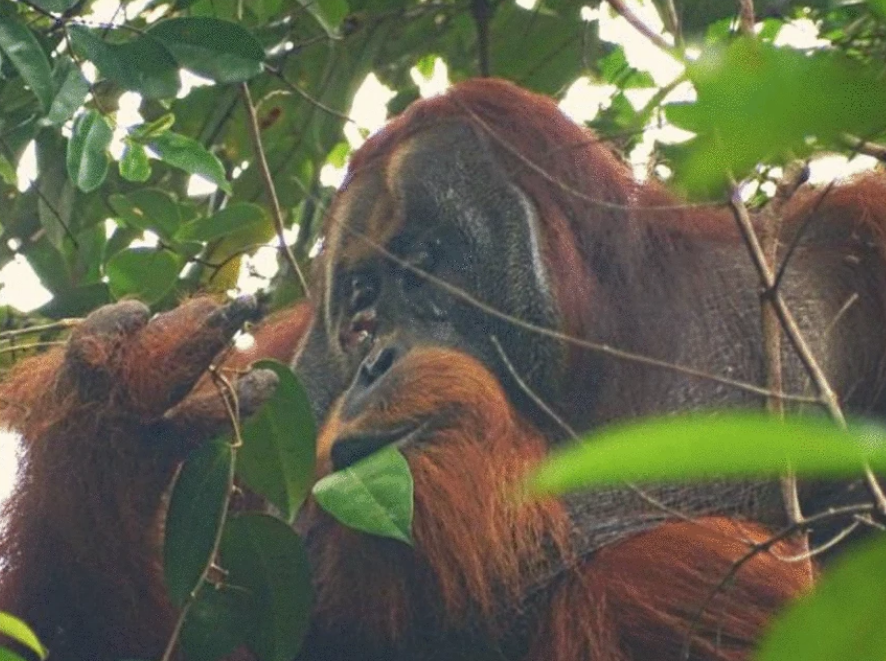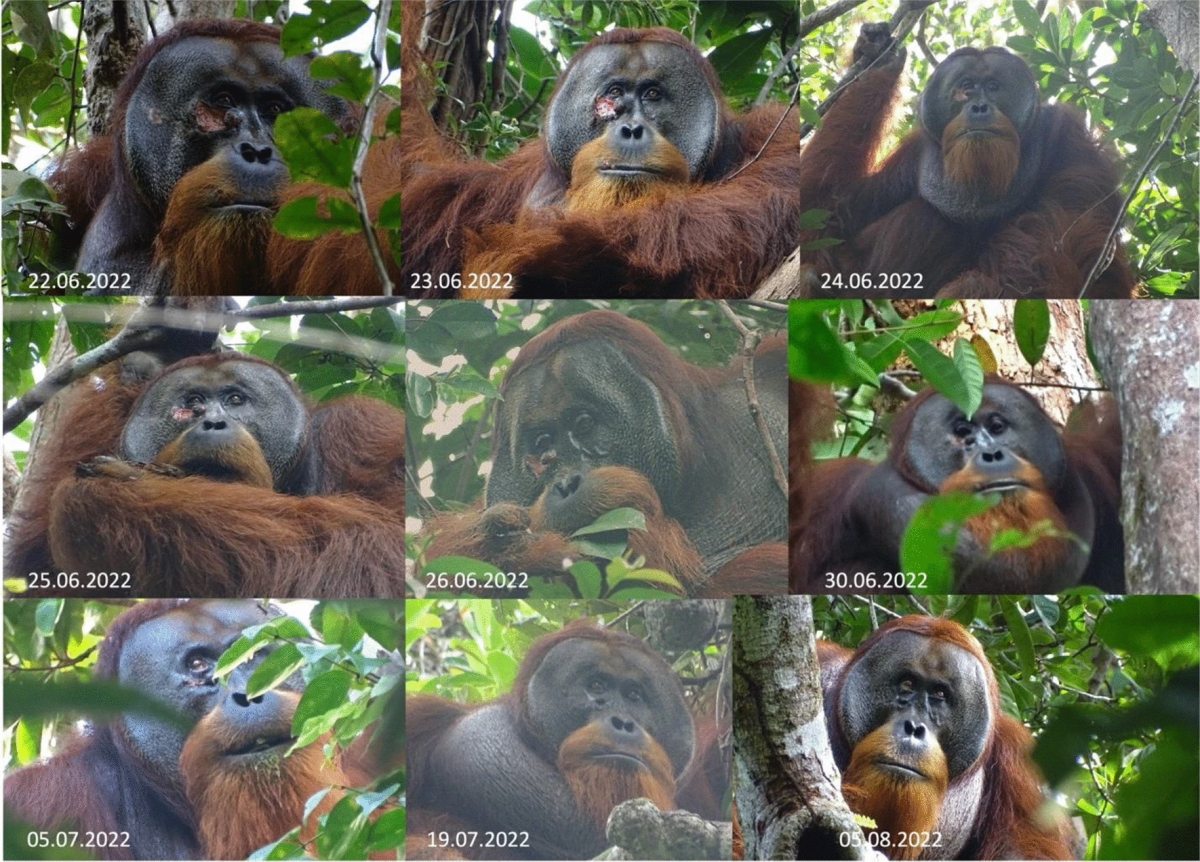In what scientists are calling a first for any non-human species, a Sumatran orangutan in Indonesia was seen creating and applying a medicinal paste made from local plants to a wound on his face.

According to a newly published study about the observation, scientists witnessed Rakus, an adult male orangutan living in Gunung Leuser National Park, chewing the stems and leaves of a plant called akar kuning into a poultice before applying it to his facial wound.
Akar kuning, an evergreen climbing plant, has anti-inflammatory and antibacterial properties and is commonly used in traditional medicine to treat conditions like dysentery, diabetes and malaria.
Scientists watched on as Rakus applied the plant juices and chewed akar kuning (also called yellow root) to a wound under his right eye for seven minutes until it was fully covered. Rakus also applied more fulsome, and less chewed, leaves to his injury akin to a leafy makeshift bandage.
After using the medicinal plant’s juice on his face, Rakus’ wound healed completely within a month. Scientists reported no signs of infection and said the wound closed within five days. Only a faint scar remains on Rakus’s face, scientists reported.
Though akar kuning is part of the local orangutan diet, the study says the plant is rarely eaten by the primates. With this knowledge, and by witnessing the length of Rakus’ self-treatment, scientists concluded he was intentionally using the plant as medicine.
Rakus’ cheek wound was first noticed on June 25, 2022, the same day he was witnessed applying the medicinal plant. Scientists said they believed he obtained the wound in a fight with another male orangutan. Rakus also had a wound inside his mouth.
Rakus, who is believed to be about 35 years old, is the first animal ever documented using a plant to treat an injury — though other primates have been observed treating wounds using different methods in the past.
From 2019 to 2021, a group of scientists studying chimpanzees in Loango National Park in Gabon witnessed the group of primates self-treating their wounds by chewing up a form of flying insect (the species is unknown) and applying the remnants repeatedly to their wounds.
Aside from wound care, scientists in 2017 reported signs of self-medication among a different group of orangutans in Borneo, who applied medicinal plants to their limbs seemingly to soothe sore muscles and joints.
Chimpanzees in multiple locations around the world have also been observed chewing on the shoots of bitter-tasting plants to soothe their stomachs. Gorillas, chimpanzees and bonobos have been documented swallowing certain rough leaves whole to get rid of stomach parasites.
Scientists say these instances are valuable observations that may better help understand the origins of human medicinal treatments and the shared ancestry of great apes and humans.
Biologist Isabella Laumer, lead author of the study published in the journal Scientific Reports, told the BBC this may have been the first time Rakus used a plant to treat a wound.
“It could be that he accidentally touched his wound with his finger that had the plant on it. And then because the plant has quite potent pain-relieving substances, he might have felt immediate pain relief, which made him apply it again and again,” she said.
Alternatively, Laumer suggested Rakus may have learned the medicinal behaviour from watching other orangutans in his group.
Researchers are now looking for other instances of self-medication among orangutans. Scientists have been observing orangutans in Indonesia’s Gunung Leuser National Park since 1994, but they hadn’t previously seen this behaviour.
Orangutans are closely related to humans and share 97 per cent of their genome with our species.

— With files from The Associated Press







Comments